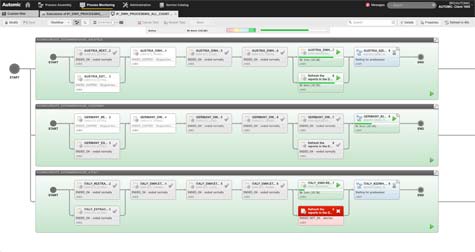Automation of any given end-to-end process represents something akin to business nirvana. The basic idea is that the process is so well defined and repeatable that just about every cost associated with delivering it can be driven out. The challenge is that most business processes wind up touching so many applications and systems that the tools that can drive that level of automation are few and far between.
As one of the providers of such tools, Automic Software is now moving to make it possible to automatically provision an application via a single click, while also providing a means for secure sharing of automation artifacts via an Automic cloud service.
Version 12 of the Automic suite of automation tools adds analytics tools as well as an upgraded user interface that unifies navigation across the Automic suite. Finally, Automic Software is now providing tools to capture business process blueprints, manage specific service level agreements (SLA) attached to any automated process, and update Automic agent software without having to take any of the applications offline.
Automic Software CEO Todd DeLaughter says, by comparison, automating any particular IT process is a relatively simple endeavor. Automating business processes involving multiple custom and packaged applications at scale requires an extensive foundation in application release automation that can be employed across almost any combination of applications and systems, says DeLaughter.
Given all the exceptions involved in any business process, automating those processes can be a major challenge. IT organizations first have to discover what applications and systems are involved in a business process. Then they have to find a way to automate that process without causing conflict with other use cases involving those applications. Finally, any time the business process changes or the applications involved are updated, they need to be able to seamlessly upgrade the automated environment.
In fact, once that blueprint is created, it more often than not becomes a strategic business asset that organizations want to be able to reuse. Driving those investments, says DeLaughter, is a desire to reduce the amount of money being spent on infrastructure, while at the same time enabling the organization as a whole to respond better to rapidly changing business conditions and opportunities.
“Organizations want to be able to simultaneously move faster, while also reducing their level of risk,” says DeLaughter.
Thanks to the rise of digital business transformation, interest in all forms of automation has never been higher. The real challenge is finding a way to implement that automation at scale across an IT environment that by definition is always changing.



